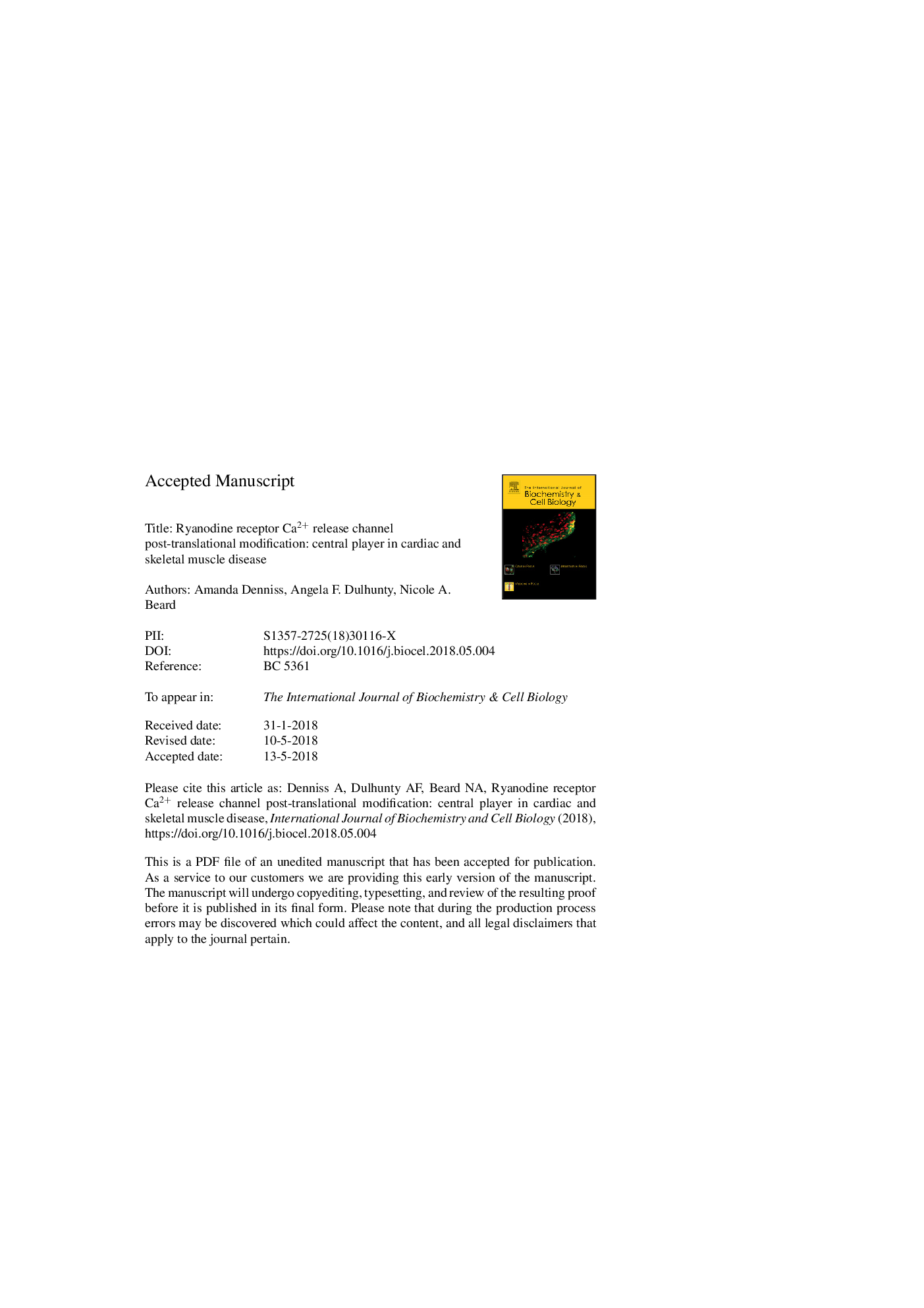| Article ID | Journal | Published Year | Pages | File Type |
|---|---|---|---|---|
| 8321899 | The International Journal of Biochemistry & Cell Biology | 2018 | 15 Pages |
Abstract
Calcium release from internal stores is a quintessential event in excitation-contraction coupling in cardiac and skeletal muscle. The ryanodine receptor Ca2+ release channel is embedded in the internal sarcoplasmic reticulum Ca2+ store, which releases Ca2+ into the cytoplasm, enabling contraction. Ryanodine receptors form the hub of a macromolecular complex extending from the extracellular space to the sarcoplasmic reticulum lumen. Ryanodine receptor activity is influenced by the integrated effects of associated co-proteins, ions, and post-translational phosphor and redox modifications. In healthy muscle, ryanodine receptors are phosphorylated and redox modified to basal levels, to support cellular function. A pathological increase in the degree of both post-translational modifications disturbs intracellular Ca2+ signalling, and is implicated in various cardiac and skeletal disorders. This review summarises our current understanding of the mechanisms linking ryanodine receptor post-translational modification to heart failure and skeletal myopathy and highlights the challenges and controversies within the field.
Related Topics
Life Sciences
Biochemistry, Genetics and Molecular Biology
Biochemistry
Authors
Amanda Denniss, Angela F. Dulhunty, Nicole A. Beard,
